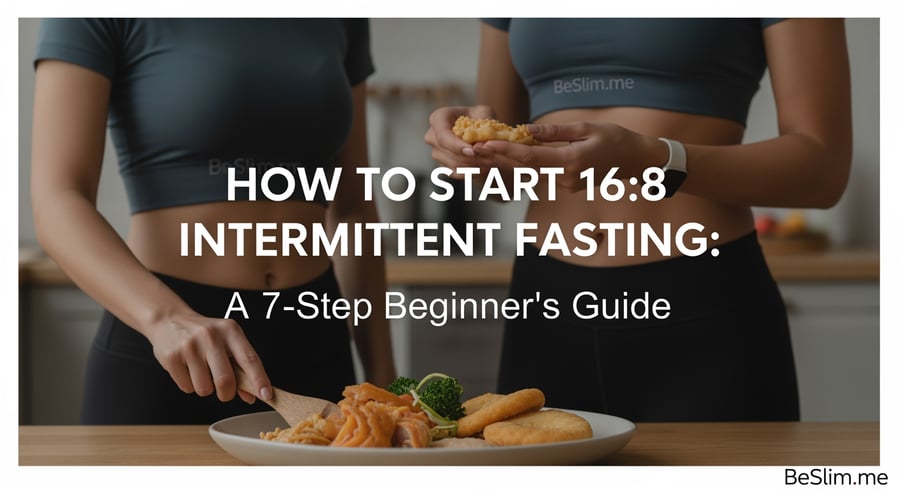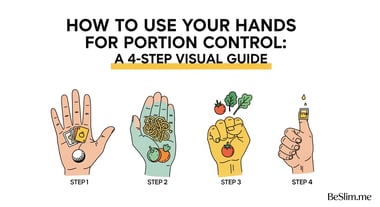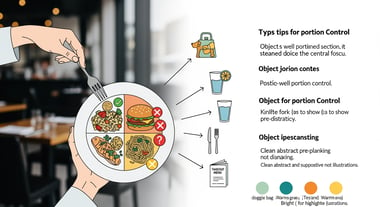As Master Kim, the Strategic Roadmaps Architect for BeSlim.me, I specialize in dissecting diet strategies like intermittent fasting (IF) to deliver balanced, evidence-based action plans. The 16:8 method—fasting for 16 hours and eating within an 8-hour window—is a popular IF approach backed by clinical research for its potential in weight management and metabolic health. This guide provides a strategic, step-by-step roadmap for beginners, emphasizing pros, cons, risks, and practical implementation. Remember, while effective for many, IF isn't a one-size-fits-all solution. Always consult a healthcare professional before starting, especially if you have underlying conditions.
Pros and Cons of 16:8 Intermittent Fasting
To kick off this guide, let's analyze the key advantages and drawbacks of the 16:8 method in a structured table. This balanced overview is drawn from clinical evidence and helps you decide if it aligns with your goals.
| Aspect | Pros | Cons |
|---|---|---|
| Weight Loss | Can promote calorie restriction and fat loss without strict dieting. | May lead to muscle loss if not combined with resistance training. |
| Metabolic Health | Improves insulin sensitivity and may reduce inflammation. | Initial side effects like fatigue or irritability during adaptation. |
| Lifestyle Fit | Flexible eating window suits busy schedules; no food restrictions. | Challenging for those with irregular routines or high social eating. |
| Sustainability | Easier to maintain long-term compared to extreme diets. | Risk of disordered eating patterns if not monitored. |
| Health Benefits | Potential for better heart health and longevity based on studies. | Not suitable for everyone, e.g., pregnant individuals or those with eating disorders. |
This table highlights the method's strategic value while underscoring its limitations. For instance, intermittent fasting like 16:8 can aid weight loss by enhancing fat oxidation, but it's crucial to approach it mindfully.
Understanding 16:8 Intermittent Fasting
Before diving into the steps, let's break down the basics analytically. In 16:8 IF, you fast for 16 hours (including sleep) and consume all calories in an 8-hour window, such as noon to 8 p.m. This leverages your body's natural fasting state to tap into fat stores for energy, potentially improving metabolic markers.
Clinically, this method works by extending the time between meals, which can lower insulin levels and promote autophagy—a cellular repair process. However, it's not without risks: potential side effects include headaches, dizziness, or nutrient deficiencies if meals aren't balanced. Contraindications include pregnancy, breastfeeding, history of eating disorders, or conditions like diabetes without medical supervision. Unsustainability arises if it feels restrictive long-term, leading to yo-yo dieting.
Backed by evidence, 16:8 intermittent fasting has shown promise in reducing body weight and improving cardiovascular risk factors in short-term studies.
Step-by-Step Implementation Guide
This is the core of your strategic roadmap: a 7-step guide structured as a phased, week-by-week itinerary for safe adoption. Each step builds progressively, incorporating clinical insights to minimize risks and maximize adherence. Aim for gradual integration to allow your body to adapt—rushing can lead to burnout or health issues.
Step 1: Assess Readiness (Week 1 Preparation)
Start with self-evaluation to ensure 16:8 fits your lifestyle. Track your current eating patterns for 3-5 days using a journal or app. Identify a feasible 8-hour window (e.g., 10 a.m. to 6 p.m. if you're an early riser).
- Action Items:
- Consult a doctor to rule out contraindications like low blood sugar or medications affected by fasting.
- Stock up on hydrating options: water, herbal tea, black coffee (no calories during fasts).
- Set realistic goals, such as losing 1-2 pounds per week.
Risk Warning: If you experience severe fatigue or mood swings, pause and seek medical advice. This method may not suit those under 18 or with eating disorders.
Step 2: Shorten Your Eating Window Gradually (Week 1)
Don't jump straight to 16:8. Begin by compressing your current eating window by 1-2 hours daily. For example, if you eat from 7 a.m. to 10 p.m., shift to 8 a.m. to 9 p.m.
- Weekly Itinerary:
- Days 1-3: Eat within a 12-hour window; focus on nutrient-dense meals.
- Days 4-7: Reduce to 10 hours; monitor energy levels.
- Tips: Break your fast with balanced meals including protein, fats, and veggies to stabilize blood sugar.
Evidence supports this gradual approach to reduce adaptation stress, as abrupt changes can spike cortisol.
Step 3: Establish Your 16:8 Routine (Week 2)
Now transition to the full 16:8 window. Choose times that align with your schedule—many opt for skipping breakfast to fast overnight.
- Action Items:
- Sample schedule: Fast from 8 p.m. to 12 p.m.; eat lunch, snack, dinner.
- Calorie tracking: Aim for maintenance or slight deficit using apps like MyFitnessPal.
- Hydrate aggressively during fasts to combat dehydration.
Risk Warning: Watch for signs of nutrient gaps, like hair loss or weakness, which can occur if meals lack variety. This method's unsustainability for some stems from social isolation during non-eating times.
Step 4: Optimize Nutrition Within the Window (Weeks 3-4)
Focus on what you eat, not just when. Prioritize whole foods to support the fasting benefits.
- Meal Structure:
- Break fast: Protein-rich (e.g., eggs with veggies).
- Mid-window: Balanced lunch with carbs, proteins, fats.
- Close window: Light dinner to ease into fasting.
- Weekly Check-In: Weigh yourself weekly; adjust calories if needed.
Clinically, combining IF with nutrient-dense eating enhances outcomes, as time-restricted eating like 16:8 can improve metabolic health when paired with a healthy diet.
Step 5: Incorporate Exercise and Monitoring (Weeks 5-6)
Add physical activity to amplify results, but time it wisely—exercise during eating windows to fuel performance.
- Action Items:
- Strength training 3x/week to preserve muscle.
- Cardio in fasted state if tolerated (e.g., morning walk).
- Track metrics: Energy, sleep, mood via a daily log.
Risk Warning: Overexercising while fasting can lead to exhaustion or injury. Contraindicated for those with heart conditions without clearance.
Step 6: Address Plateaus and Adjustments (Week 7+)
By now, evaluate progress. If weight loss stalls, tweak your window or calorie intake.
- Strategies:
- Shift window (e.g., to 2 p.m.-10 p.m. for night owls).
- Include rest days from strict fasting.
- Reassess goals: Focus on non-scale victories like better energy.
Sustainability tip: Cycle in maintenance weeks to prevent burnout.
Step 7: Long-Term Maintenance and Evaluation (Ongoing)
Make 16:8 a habit, not a temporary fix. Review every month with a healthcare provider.
- Action Items:
- Integrate flexibility for social events.
- Monitor blood work for markers like cholesterol.
- If ineffective, pivot to alternatives like 14:10 IF.
This phased approach ensures a strategic build-up, reducing dropout rates common in IF studies.
Common Pitfalls and How to Avoid Them
Even with a solid plan, beginners often encounter hurdles. Here's a dedicated analysis of frequent issues, with strategic avoidance tactics based on clinical observations.
Pitfall 1: Overeating in the Window – Bingeing on junk food negates calorie benefits.
Avoidance: Plan meals in advance; focus on volume-eating with veggies and proteins to stay full without excess calories.Pitfall 2: Ignoring Hydration and Electrolytes – Fasting can cause dehydration or imbalances, leading to headaches.
Avoidance: Drink at least 8-10 glasses of water daily; add electrolyte packets if active. Monitor for symptoms like dizziness.Pitfall 3: Neglecting Mental Health – Obsession with timing can foster anxiety or disordered eating.
Avoidance: Practice mindfulness; if stress rises, shorten the fast or take breaks. Seek professional help if patterns feel unhealthy.Pitfall 4: Inconsistent Scheduling – Shifting windows disrupts circadian rhythms.
Avoidance: Stick to a consistent routine; use apps for reminders.
These pitfalls highlight IF's potential unsustainability—address them proactively to maintain balance.
3 Highly Actionable Tips for Immediate Start
To launch your 16:8 journey today, here are three direct, goal-oriented tips:
Pick Your Window Now: Decide on an 8-hour slot that matches your daily rhythm (e.g., 12 p.m. to 8 p.m.) and set phone alarms to enforce it starting tomorrow.
Prepare a Starter Meal Plan: Stock your kitchen with easy, balanced options like Greek yogurt with berries for breaking fast—aim for 3 meals plus 1 snack in your window.
Track and Adjust Daily: Use a simple journal to note hunger levels and energy; if needed, extend your window by 1 hour on tough days for better adherence.
By following this guide, you'll strategically implement 16:8 IF with minimal risks and maximum potential. Stay consistent, listen to your body, and adjust as needed for long-term success.
References
Medical Disclaimer
The content on this website is for informational and educational purposes only. It is not intended as medical advice and should not be relied upon as a substitute for consultations with qualified healthcare professionals who are familiar with your individual medical needs. Always seek the advice of your physician or other qualified healthcare provider with any questions you may have regarding a medical condition. Never disregard professional medical advice or delay in seeking it because of something you have read on this website.





Comments (0)
No comments yet. Be the first to comment!